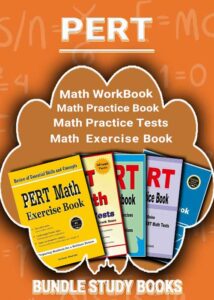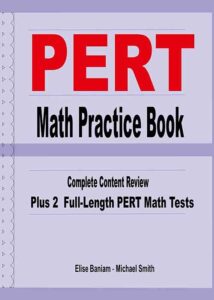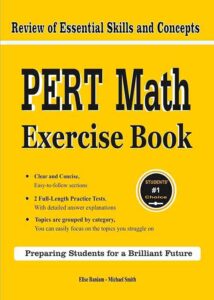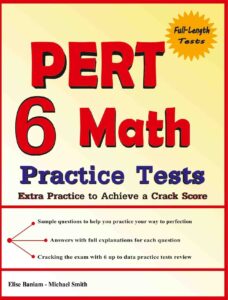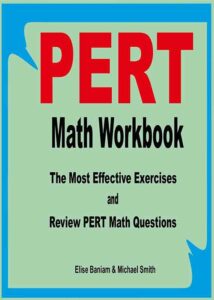
How to Prepare for the PERT Math Test?
The Florida Postsecondary Education Readiness Test (PERT) is a critical assessment for students aiming to enter college. It evaluates academic readiness in reading, writing, and mathematics, influencing course placements in colleges across Florida. Unlike traditional tests, the PERT doesn’t label students with pass or fail statuses; instead, it assesses which subjects align best with their current knowledge levels.
Understanding the PERT Math Test
The PERT Math test is a computer-based assessment comprising 30 questions, with content ranging from basic algebra to more complex mathematical concepts. This test is unique in its adaptive nature, meaning the difficulty of questions is influenced by the student’s previous answers. While calculators are not permitted, a pop-up calculator is provided for certain questions.
Key Topics in PERT Math
Equations and Algebraic Expressions: This area tests students’ ability to solve and evaluate algebraic equations and expressions.
Polynomials: Understanding the basics of polynomials and their applications is crucial.
Coordinate Planes and Simultaneous Equations: This section assesses the ability to interpret and solve problems related to coordinate geometry and simultaneous equations in two variables.
PERT Reading and Writing Assessments
Alongside Math, PERT also assesses reading and writing skills:
Reading: This section focuses on comprehension, critical analysis, and vocabulary.
Writing: Involves constructing coherent essays and understanding the nuances of English grammar and style.
Preparation for the PERT Math Test
Understand Basic Concepts: Start with grasping fundamental mathematical principles, especially if they’re your weak spots.
Practice Regularly: Use online resources and past papers to get accustomed to the PERT format.
Utilize Study Guides: Guides like the PERT Math Study Guide can provide a roadmap for your preparation.
Work on Weak Areas: Identify and focus on topics where you need the most improvement.
PERT Math Practice Test
Taking practice tests is invaluable. These tests give you a realistic taste of what to expect and help identify your strengths and weaknesses. They are also great for improving time management skills.
Study Topics Deep Dive
Prime Numbers: Understand the properties of prime numbers and be able to identify them.
Percentages: Learn to convert between fractions, decimals, and percentages.
Order of Operations: Master PEMDAS (Parentheses, Exponents, Multiplication and Division, Addition and Subtraction).
Exponents: Get comfortable with working on exponential equations.
Coordinate Planes: Understand how to interpret and plot points on coordinate planes.
Equations: Be adept at solving different types of equations, including linear and polynomial.
Recommended Resources
Best Books for PERT Math Test: There are numerous books and online resources tailored specifically for PERT Math preparation.
Preparing for the PERT Math Test requires dedication, strategic planning, and continuous practice. By focusing on essential topics, leveraging helpful resources, and consistently practicing with mock tests, you can enhance your mathematical skills and approach the PERT with confidence. Remember, your effort and preparation will be key to successfully placing into the college courses that align with your academic aspirations


